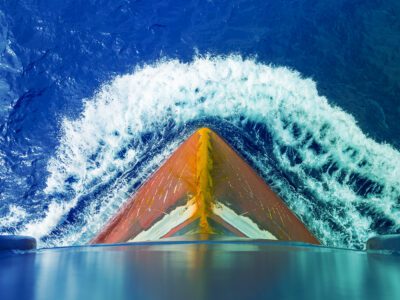Do GMO Salmon Pose an Environmental Threat?
GMO fish are one step closer to sale in the U.S., reports the LA Times:
After more than a decade in regulatory limbo, genetically engineered Atlantic salmon that grow faster than their naturally born counterparts moved closer to American plates, with the publication Friday of a government report that found the fish wouldn’t hurt the environment and would be safe to eat.
The biggest environmental issue regarding the salmon is the possibility that they might escape and interbreed with or supplant wild fish. The FDA’s environmental assessment argues that the risk is negligible:
AquAdvantage Salmon would be produced and grown-out in secure facilities that have been verified and validated by FDA. As a result, the possibility that GE fish could escape from containment, enter the local environments of PEI or Panama, and survive to reproduce is extremely remote. In addition, because the production process for AquAdvantage Salmon would ensure that populations produced will be triploid (effectively sterile), all-female animals, the possibility of their reproducing in the wild is likewise extremely remote. Finally, the inhospitable environmental conditions around the egg production and grow-out facilities further reduce the possibility of establishment and spread.
The 2010 draft of the environmental assessment contained a handy summary of the containment measures (the information seemed to be scattered in different places in the final draft). Here’s a list:
- ‘Physical measures include multiple mechanical means to prevent escape (e.g., screens, filters, etc.), while physico-chemical measures include the use of chlorine to kill any potential escapees.
- ‘A strong management operations plan ensures that these containment measures are reliably implemented.
- ‘Geographical and geophysical containment is provided by the location of the egg production and grow-out sites: the environment surrounding the egg-production site in Canada is inhospitable to early-life stages of Atlantic salmon due to high salinity; and, the environment downstream of the grow-out site in Panama is inhospitable to all life stages of Atlantic salmon due to high water temperatures, poor habitat, and physical barriers (e.g., several hydro-electric facilities).
- ‘Biological containment is accomplished through the production of all-female triploid fish, which reduces the chance of breeding with native species, and significantly reduces the risk of transgene propagation in the environment.’
I checked to see if the assessment considered the additional hazards posed by hurricanes or sabotage, which might cause simultaneous failures in several of these safeguards, and it did discuss them..
There’s a possibility that the salmon might be raised in less secure facilities in the future, which FDA not be able to control. However, having spent a decade trying to prove the safety of the salmon, the producer clearly has an incentive to maintain its credibility. According to Nature, the producer promised to sell the fish only to farmers using enclosed facilities on land.
NOAA and the NMFS agree with the FDA’s assessment. Of course, the devil is in the details, and there is sure to be more controversy and litigation to come. FDA has, however, apparently taken the “hard look” at environmental consequences and produced a plausible-seeming assessment that is likely to receive deference from the courts.
Reader Comments
4 Replies to “Do GMO Salmon Pose an Environmental Threat?”
Comments are closed.







Let’s see…the risk of genes escaping from crops was negligible, but that doesn’t stop Monsanto. The risk of farmed fish escaping was negligible, but they escaped. The risk…yes, we know.
Let’s see…the risk of genes escaping from crops was negligible, but that doesn’t stop Monsanto. The risk of farmed fish escaping was negligible, but they escaped. The risk…yes, we know.
We are wrong to manipulate life in these ways, sterilizing lifeforms to prevent contamination is a warning for the future that are previous farmers took thousands of years to improve upn
We are wrong to manipulate life in these ways, sterilizing lifeforms to prevent contamination is a warning for the future that are previous farmers took thousands of years to improve upn